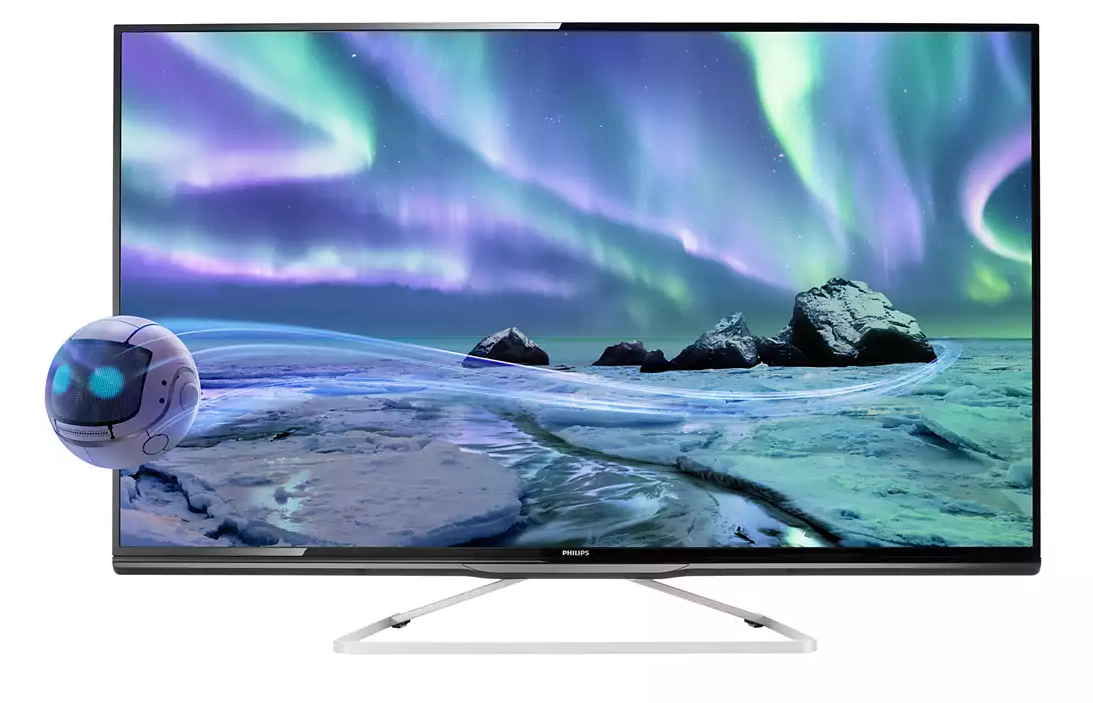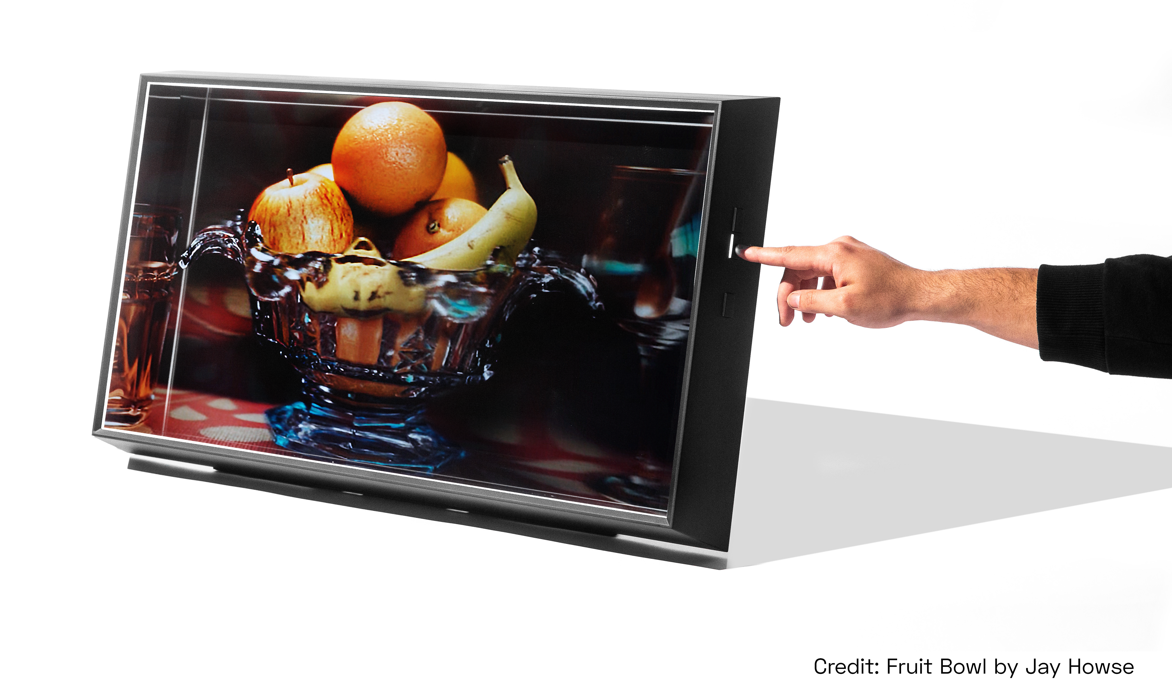Time to celebrate stereo 3D technology.

Did you know there is a Thank God It’s Monday Day? It was January 3. Blue Monday? January 17. No Brainer Day? February 27. National Awkward Moments Day? For many of us, that is nearly every day. Officially, it is March 18—which seems fitting as it comes the day after St. Patrick’s Day, when the Irish celebrate big, and those who aren’t Irish celebrate with them. There are a lot of obscure holidays: Tell a Lie Day (April 4), National Dance Like a Chicken Day (May 14), which follows National Frog Jumping Day (May 13). There’s more, so many more—and for some reason they did not make to Hallmark’s list.
One holiday that this industry should be celebrating is National 3D Day. It’s easy to remember: It is held each year on the third day of the third week of the third month. For easy reference, this year it is March 22. It’s legit—it is listed on the National Day Calendar, and this year it shares the designation with National West Virginia Day, World Water Day, National Bavarian Crepes Day, and National Goof Off Day. While some of those “holidays” are to be taken lightly, others, such as National 3D Day, are intended to be taken seriously.
National 3D Day celebrates the art, science, and history of stereoscopic 3D (S3D) imagery. It was established two years ago by 3D Space, a nonprofit dedicated to the preservation of stereoscopic imaging through The Center for Stereoscopic Photography, Art, Cinema, and Education, with the goal of recognizing the history and resurgence of the technology.
How much do you really know about stereo 3D, aside from seeing it in films such as Life of Pi, Hugo, Avatar, Gravity, and others? Stereo technology spans many industries and applications, not just filmmaking. It is an important tool in the oil and gas industry, the medical field, industrial design, and so much more. It encompasses cameras and projectors, screens, and displays, glasses and head-mounted displays, and even sound.
The intention of S3D is realism; in simple terms, it is achieved by displaying a pair of slightly offset images that are blended into one, giving it the illusion of depth. Just how well this works depends on the technology and devices being used, as well as the content using it.
First, a history lesson
If you think that stereo 3D is a contemporary invention, think again. Sir Charles Wheatstone invented the stereoscope in the late 1830s to give depth to 2D drawings. The device, which used mirrors, was primitive by today’s standards, but the premise was the same: two slightly offset images could be used to trick the brain into seeing perceived depth. About a decade later, Sir David Brewster built on that setup with a stereoscope, building a device that was lens-based and portable. As the newfangled invention of photography caught on, many became enthralled at looking at 2D photos in stereo.

In the early 1920s, audiences no longer had to hold stereoscopes to view 3D films and could use anaglyph-style glasses instead. This process entailed printing overlapping red and cyan images onto a single film reel, and when audiences used a corresponding viewing device, it generated a 3D effect.
Interest—and new developments—continued. Once IMAX entered the picture, it became successful in putting seats in its theaters, and still does today. While IMAX continued to popularize 3D films, technologies such as RealD, Dolby 3D, and others also helped fill theater seats with audiences who were now wearing polarized or LCD shutter glasses. Filmmakers were producing 3D content, both actual 3D content and 2D content that had been converted to 3D.
This, of course, is just a brief jaunt through history.
Living life in stereo 3D
One person whose work has had a lasting impact on various aspects of stereo 3D is filmmaker/inventor/author-lyricist Lenny Lipton, starting in the early 1980s with the founding of StereoGraphics Corp. In 1989, StereoGraphics introduced CrystalEyes for stereo visualization, which was used for medical imaging, aerial mapping, molecular modeling, and so forth; NASA even used it to remotely drive the Mars Rover.
Lipton also was the lead developer of the ZScreen polarization modulator, which enabled a projector to display both the left and right halves of a stereo pair. Introduced in 1988, this technology was used for molecular modeling and aerial mapping visualization. StereoGraphics was later acquired by RealD, and in mid-2000, as CTO, he worked to adapt the ZScreen for use in theatrical projection.

Over the years, there has been a lot of criticism surrounding S3D films, and that rankles Lipton, who points out that stereo 3D films have garnered billions of dollars over the years, especially with the upcharge theaters generally charged for a 3D movie. According to Statista, box office revenue generated by 3D films in the US and Canada from 2006 to 2017 totaled $15.1 billion (USD). “And yet, people laugh at it, they call it a catastrophe, a failure, but that’s not true,” he says.

Moreover, Lipton disagrees with the notion that the public has gone through a rocky, almost love–hate relationship with the genre. “It’s not true,” he says emphatically. “Since my invention was introduced, it has made money steadily—billions of dollars and hundreds of movies made.”
Of course, getting seats filled in theaters was rough during the pandemic, even downright impossible as many theaters closed their doors, whether temporarily or permanently, opting for VOD or streaming from their homes. Yet, US box-office revenue was down in 2019, which was pre-pandemic. “It’s not that 3D can’t survive,” he says. “The question is, can theaters survive? Now we have a major cinema catastrophe caused by the pandemic.”
While streaming and VOD has satisfied many, S3D at home is not that simple. Whether or not there is a market for S3D in the home has yet to be seen, at least for now. Not long ago, manufacturers were selling stereo 3D televisions—LG, Sony, Samsung—with some products having better results than others. Today, there isn’t as big of a push to manufacture these products.
Back in 2005 or so, Lipton and a colleague had tackled one of the bigger hurdles to S3D by figuring out how to make the system twice as bright. “All the pieces are there; people just need to return to the theater. There is not much that needs to be improved upon [for a good stereo experience],” he says. However, theater owners need to do their part by maintaining the equipment and not pushing lamps past their shelf life, which along with other factors, results in darker images. Content creators likewise have a role to play by generating exciting and compelling stereo images, so audiences are much more willing to pay a few dollars more for an S3D film experience.
History supports Lipton’s view. Avatar, released in 2009, generated substantial buzz for S3D. Not only is Avatar considered a prime example of 3D filmmaking, but it is also the highest grossing film of all time. With Avatar 2 scheduled for release later this year, and more Avatar sequels to come, it could yet again provide S3D with a big push.

Fun and games
Most people automatically think of films when they hear “stereo 3D.” In fact, many would say movies helped popularize stereo 3D and drive awareness of the genre. “However, from the point of view of interesting content that would make people say, ‘Wow, that’s cool!’ it was 3D gaming,” says Neil Schneider, who has been following S3D in games for many years as executive director of The International Future Computer Association (TIFCA) and founder/CEO of the website Meant to be Seen (MTBS3D.com) since 2008.
“Stereo 3D just added a lot more to the whole experience. You put the glasses on in those days and a relatively simple graphics scene suddenly looked visually interesting,” Schneider says.
S3D films have been around for decades, long before Avatar. As long as 30-plus years ago, scientists, developers, and device manufacturers were injecting 3D into games, though many results are not worth discussing, such as Nintendo’s Famicon 3D System (1987) for its Family Computer game console, which comprised a pair of LCD shutter glasses and an interface box, and Nintendo’s short-lived Virtual Boy console.
In the late 2000s, 3D gaming was really gaining steam. Schneider says that back in 2008 or so, 3D, at least for gamers, tended to be more technical, and the people were sharing their home brew solutions.

During this time, 3D gaming was very much PC-driven. Then, in 2009, Blitz released the title Invincible Tiger: The Legend of Han Tao, which became the first stereoscopic 3D console game on Xbox 360 and PlayStation 3; it could be played on the 3D televisions at the time. Making the game compatible with all the various 3D formats from each TV manufacturer was difficult, according to the studio.

After this breakthrough, 3D gaming did not take hold as some expected it would. In Schneider’s opinion, in these early days, people were very interested in 3D in films and in gaming. However, he believes content didn’t go far enough in their use of S3D.
Possibly a byproduct of the rush to generate 3D content, the conservative methods for creating stereoscopic 3D games and films may have inadvertently soured some user opinions of the format, notes Schneider. “In the gaming world, it was very important to have the full 3D, no-hands-barred experience,” he adds.

While the early consoles efforts fell flat, it was a different story on the PC side. GPU maker Nvidia came to play early in this realm and began offering 3D drivers that made it possible to play existing 2D games in 3D. Then, in 2008, Nvidia offered the now-discontinued (after 11 years) Nvidia 3D Vision stereoscopic gaming kit, which comprised shutter glasses and GeForce driver software that enabled stereo for any Direct3D game. Offering users a choice of Dynamic Digital Depth’s Tridef drivers and iZ3D’s software solution, AMD also entered the field a few years after 3D Vision’s hold on the market with the open-platform HD3D supporting its Radeon series cards. As a result of these two giants’ efforts, along with LCD monitors that could refresh at the rate of 120 Hz and support stereo viewing, the number of 3D-supported games rose significantly.

As Schneider points out, today we are in the era of virtual reality, so S3D did not disappear. It’s still very much present in modern VR, and he sees a future ripe with lifestyle-based applications.
3D on Display(s)
S3D was on a roll more than a decade ago, and this applied to film and TV, as well as games. TV channels were featuring 3D broadcasts of sporting events, which helped the sale of 3D televisions.
Yet, due to the lack of standards, competing systems that were very expensive and not well marketed, and a small amount of 3D content available, 3DTV did not win customers. “With 3D broadcast, ideally you need to send twice as much data, and that costs money,” says Bob Raikes, writer/editor at Display Daily newsletter and managing director of market research consultancy Meko.
There were other issues, too. As a result, manufacturers began moving away from producing 3DTVs and instead focused their efforts on 4K TVs.

As for monitors, as far back as 2008, 3D monitors were being made by companies like iZ3D and Zalman for playing DirectX 9 games. But it was a lawless time, and without any APIs and standards, the drivers had to be hand-tweaked for each game since game developers were not involved in making their games work on these 3D screens.
There are three types of 3D displays: active and passive, which require 3D glasses, and glasses-free (autostereo). Autostereoscopic display technology can use lenticular lenses, a parallax barrier, holography, light fields, and volumetrics. Volumetric displays form a visual representation of an object in three physical dimensions, as opposed to the planar image of traditional screens that simulate depth through visual effects. With a volumetric display, a person can view an object from any direction.

Shawn Frayne is CEO of Looking Glass Factory, which builds desktop and personal holographic displays. He believes that as more content is created in 3D by individuals and businesses, as is happening at an accelerating pace now, there will be more demand for new ways to share and consume that content. Displays that have advanced stereo 3D capabilities (without glasses) will have a growing role to play as this shift from 2D to 3D rolls on, he says.
Frayne contends that those industries that create in 3D today will be the first to adopt glasses-free 3D holographic light field displays. “They already have the content in a native 3D format, and that’s a prerequisite for being an early adopter of displays with 3D output and interaction capabilities.,” says Frayne. That includes experiential agencies working with 3D engines like Unity and Unreal, engineering firms working with various CAD platforms, and animation studios and individuals drawing and sculpting in 3D today. Medical and scientific visualization companies are also in that mix but will be a bit slower to adopt due to regulatory reasons, he adds.
Where is 3D headed when it comes to displays? Raikes admits initially he was skeptical about the adoption of S3D because of its impracticalities. “I’ve been in this space for close to 40 years, and about three years in, I came up with Bob’s law, which says that everything that increases visual bandwidth wins in the end. And 3D will increase the visual bandwidth, so it will happen. I am absolutely convinced of that, but I’m not sure if I’ll be alive to see it happen commercially,” he says.
Those who wear glasses…
As far back as the early 1920s, stereo 3D was achieved with anaglyph glasses, then came polarized glasses. Around 1940, the plastic View-Master toy for stereo picture viewing was released, giving many their first entry into S3D.
Anaglyph glasses, those cheap paper glasses with one blue and one red lens, create the perception of depth when used to view an anaglyph image (the combination of two images: one with a red filter and the other with a blue filter. Even today, this technology is used for 3D viewing of comic books and other materials in the print medium. Polarization, however, upstaged anaglyph in film, as the glasses provided more accurate color viewing and made stereo 3D viewing more comfortable. They work by restricting light that reaches each eye using different polarized filters. Polarization is the choice du jour at theaters.

It’s important, too, to recognize shutter glasses. There are two types of glasses: active and passive. Active shutter glasses are made of LCD shutter lenses that run on a power source and use a timing signal to alternately block one eye and then the other in quick succession and in sync with the refresh rate of the screen. More expensive, these glasses are commonly used with most consumer 3DTVs, projectors, and PCs/workstations; they are also used in theaters and with some visualization systems. Passive glasses are made of polarizing lenses similar to those often used in movie theaters and amusement park rides. Each image is polarized to match one passive eyeglass lens, and each image is then shown to each eye at the same time—no power source needed.
The recent rise of AR, VR, and XR has resulted in head-mounted displays and headsets such as the HTC VIVE and Oculus Quest and Rift. There are also options that utilize an attached smartphone to achieve VR viewing.

Neal Weinstock entered the 3D market in the mid-2000s and started Soliddd, an optical technology company introducing an autostereo display system they are marketing for printed advertising posters. The company continues to innovate with AR and VR monitors and eyewear; it is working with licensee Orga FPV and soon will be releasing a single-element lens, focus-free AR/VR system with a pair of glasses similar in thickness and comfort to everyday glasses and will be in focus no matter the wearer’s visual acuity.
“Soliddd does AR and VR displays and sensors. Our optics fit anyone’s eyes without adjustment, with broad eye-box and eye relief, and are very comfortable. If you normally need corrective eyeglasses, you don’t need to wear them for our system,” Weinstock says. “We use our lenses to improve both the display and for 3D positioning capture in cameras, and we’re using them first in cameras together with displays and headsets for strongly improved gaze tracking and much more efficient foveated rendering. It’s an integral imaging system for both capture and display.” (Integral imaging captures and/or reproduces a light field using a 2D array of micro-lenses.) Soliddd has optics that fit close to the eye and does a combined system with this tracking as well as integral imaging lenses that fit over the display.
Looking ahead, Weinstock expects to soon see 3D displays for the naked eye—meaning no glasses—being used at airports and shopping malls as advertising and informational vehicles. Meanwhile, users of S3D today can be found mostly in the science and technology realms. In terms of home use, Weinstock believes that 3D consumption in the home will take some time. How much value will someone get from a high-end 3D display for normal entertainment is the question right now. Perhaps gamers, itching to play the latest 3D title, will change that dynamic.
S3D’s tomorrow
As Jon Peddie, president of Jon Peddie Research, points out in his book “The History of Visual Magic in Computers,” for applications such as CAD and medical analysis, S3D is an important and necessary capability. For commercial applications such as signage, it can be helpful. In entertainment systems—cinema, TV, PCs, and mobile devices—it can enhance the user experience.
So, what can be done to push S3D into the next realm? The experts I talked with agree that good stereo content is needed. And by that, they mean well thought out stereo and meaningful 3D that enhances the story, not the gimmicky moments of having an object pointing at your eyeball, although some, like Schneider and his army of 3D glasses-holding gamers, love that stuff.
We have been on a 3D trajectory for quite some time both commercially and personally, and no doubt that will continue. Meanwhile, let’s celebrate how far S3D has come as we look to its next chapter.
S3D is no longer a singular subject. Today, it has many branches, and those branches have grown branches and leaves. The subject matter of S3D is extremely large, and to cover it all in one article meant just scratching the surface. Hopefully, it has piqued your interest in this growing medium and will encourage you to dive deeper into the various aspects of S3D. So, go celebrate this amazing technology. Eat a piece of cake. Drink a glass of champagne. See a 3D movie. And, have a happy 3D Day!





